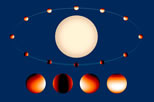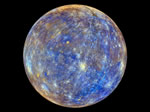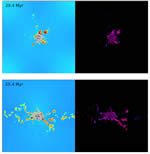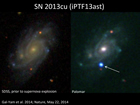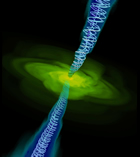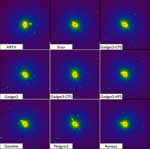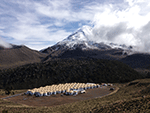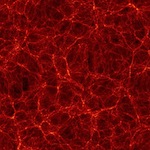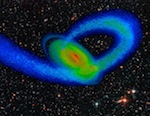Word doc
PDF (formatted and ready to go as a single newsletter page)
Drying Out the Moon?
For decades, planetary scientists and geologists assumed that the Moon was about the driest and dustiest place in the solar system. Then around 2010, a spate of independent observations from spacecraft and elsewhere uncovered evidence of hydrogen in lunar rocks. Taking hydrogen as a proxy for water (H2O), the evidence suggested that ice might be buried at the lunar poles—and that indeed, the material from which the Moon formed might have been as wet as that which formed Earth.
The lunar mineral richest in hydrogen is apatite: a compound of calcium, phosphorus, and oxygen that also incorporates either fluorine, chlorine, or hydroxyl (an oxygen-hydrogen group). For those who like chemical formulas, apatite is written as Ca5(PO4)3(F, Cl, OH).
Apatite is attractive as a tracer of volatile elements in many environments because it appears in many rocks brought back by the Apollo astronauts, ranging from the relatively young lunar maria (lava seas) to the ancient highlands. Thus, apatite was regarded as a good tracer of hydrogen. Indeed, apatite was the only hydrous mineral (one with water or water’s constituents) in lunar samples.
A new computational model of how apatite crystalizes, devised by Jeremy W. Boyce in the Department of Earth, Planetary, and Space Sciences at UC Los Angeles and four coauthors now indicates that apatite is a misleading indicator of water in the Moon.
No appetite for apatite
Boyce’s model simulates how apatite crystalizes out of cooling molten lunar magma, incorporating fluorine, chlorine, or hydrogen into its structure. Modeling revealed that during fractional crystallization—in which newly formed crystals separate from the melt—apatite preferentially incorporates fluorine first.
“Early-forming apatite is so fluorine-rich that it vacuums all the fluorine out of the magma, followed by chlorine,” explained Boyce. “Apatite forming later doesn’t see fluorine or chlorine and becomes hydrogen-rich because it has no choice.”
The model also makes specific testable predictions. For example, it predicts that apatite crystals grown at different times in the same magma should have different abundances of fluorine, chlorine, and hydrogen—abundance differences observed almost ubiquitously in lunar rocks. It also suggests that if crystallization is quick or diffusion slow, the core of a crystal should be rich in fluorine while its rim is fluorine-poor and hydrogen rich—zoning indeed observed in basalts brought back from Apollo missions 11, 12, and 14.
Most importantly, the model demonstrates how apatite could form with orders of magnitude more hydrogen than expected from a melt actually having little water. “Because it is not required that late stage H2Omelt [the amount of water in the melt] be elevated in order to explain the elevated abundances of H2Oap [the amount of water in the apatite], hydrogen-rich apatite cannot be cited as evidence for elevated H2Omelt a priori,” state Boyce and his co-authors in their paper in the April 25, 2014 issue of Science.
So does the Moon have water?
Does this finding about apatite mean the Moon is as arid as thought before about 2010? Likely, no, says commentator Mahesh Anand in a perspective article in the same issue of Science. Olivine crystals, “which were some of the earliest-formed crystals in lunar volcanic glasses, point to a wet lunar interior,” Anand pointed out, as does spectroscopic analysis of plagioclase crystals and other observations
What the finding does mean is that apatite—the most widely used method for estimating water in lunar rocks—“cannot be trusted,” Boyce declared.
“We’re knocking out one of the most important pillars of evidence regarding the conditions of the formation and evolution of the Moon,” he concluded. “Next, we plan to determine how badly apatite has distorted our view of the Moon and how we can best see past it to get at the Moon’s origin.” –Trudy E. Bell, M.A.
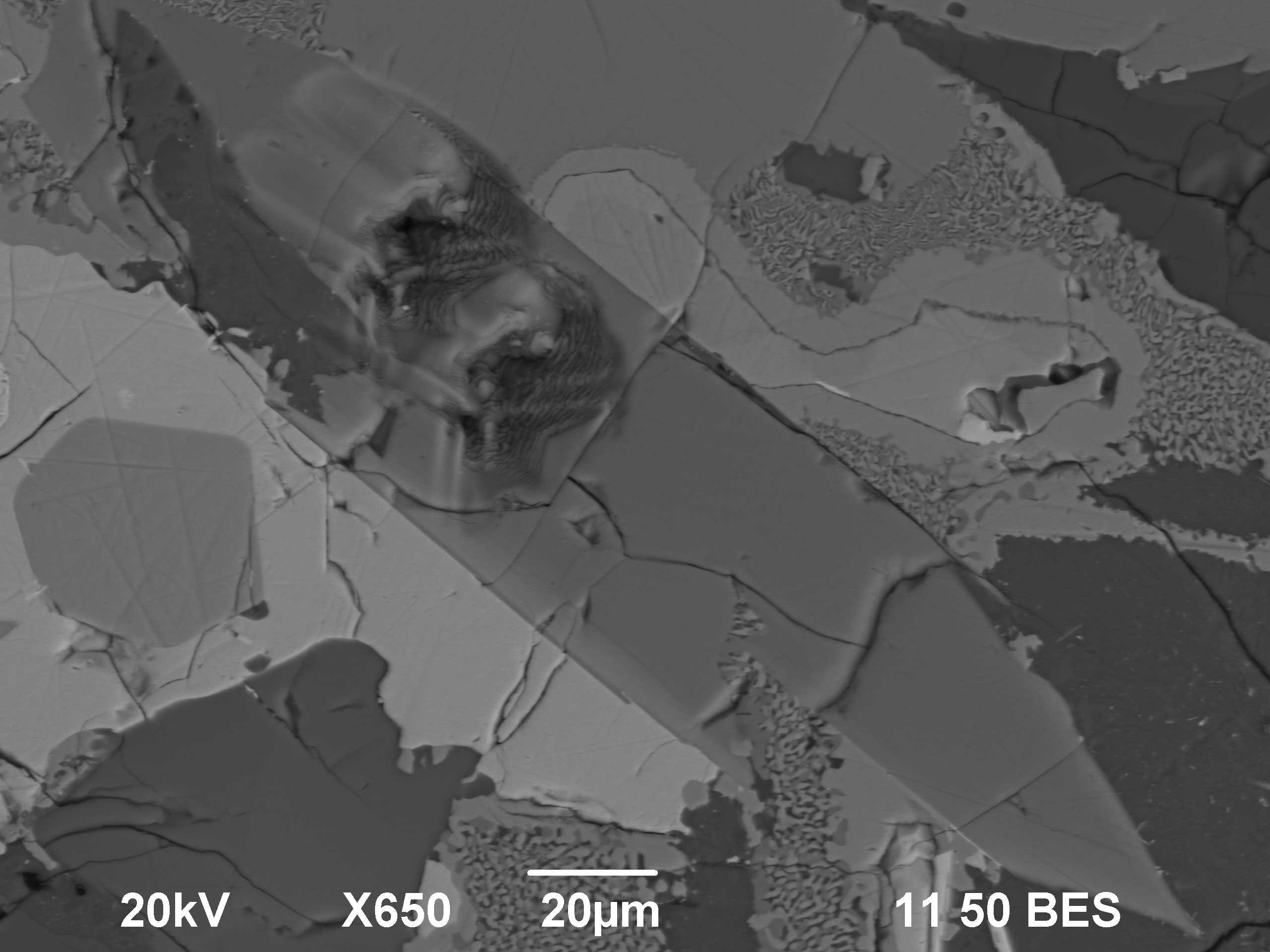

Photomicrograph of Apollo 11 lunar sample 10044,644 maps density of its polished surface: denser materials reflect more electrons and look lighter gray. Pinkscale version of image highlights density variations for a crystal of apatite. Such variations would be expected had the crystal formed through fractional crystallization—a process that ruins apatite’s ability to record volatiles, including hydrogen. Credit: Jeremy Boyce, UCLA
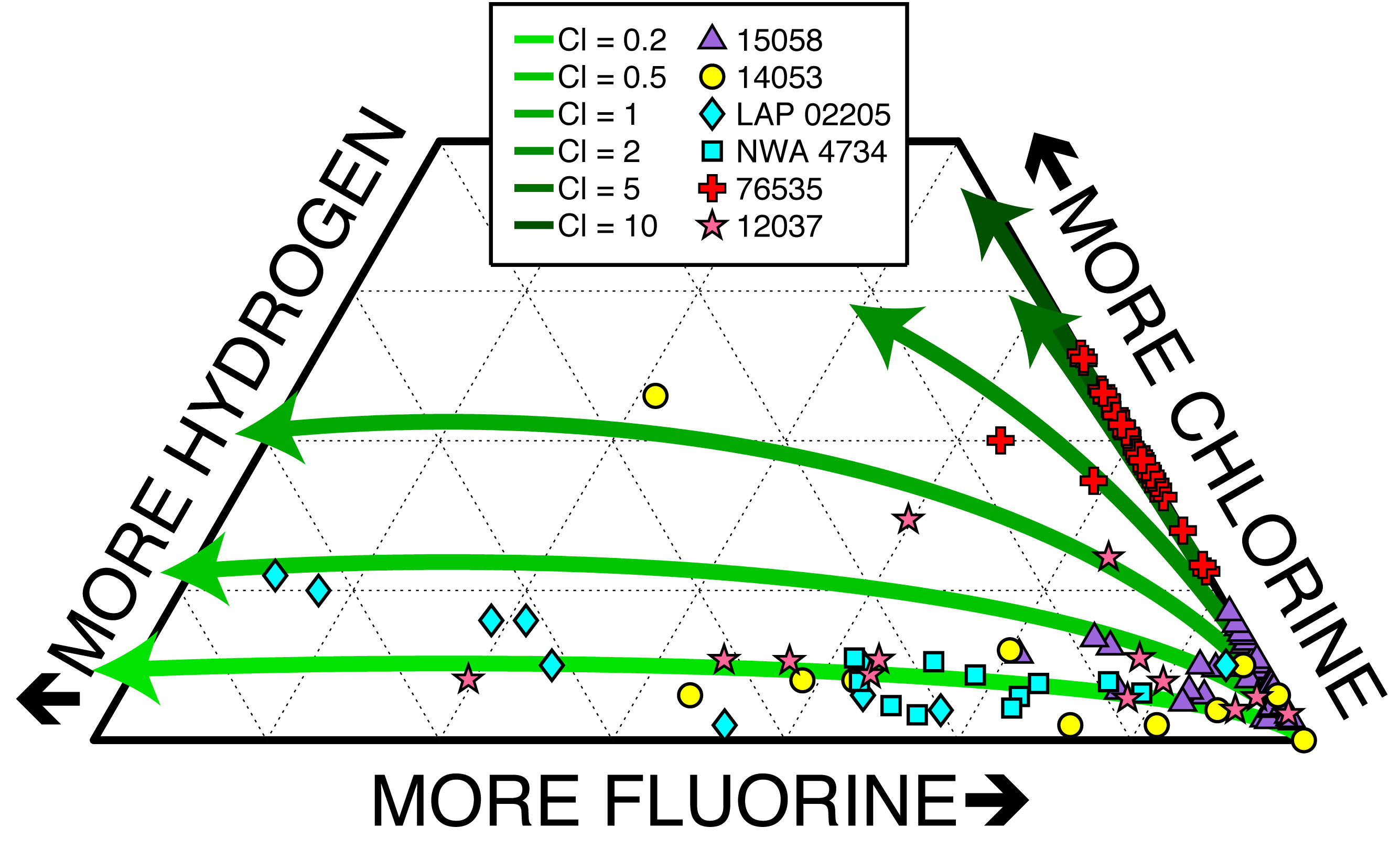
Measurements of hydrogen, fluorine, and chlorine in different lunar samples are shown as different symbols. Green curves represent how composition of apatite changes because of fractional crystallization. Shades of green depict models with different amounts of Cl, but all models have identical water. Changing the amount of fractional crystallization and the Cl content, one can model any apatite found now on the Moon, whether water rich or water poor—but all could have come from magmas with the same water content. Thus, apatite is a poor indicator of magmatic water. Credit: Jeremy Boyce, UCLA
The University of California High-Performance AstroComputing Center (UC-HIPACC), based at the University of California, Santa Cruz, is a consortium of nine University of California campuses and three Department of Energy laboratories (Lawrence Berkeley Laboratory, Lawrence Livermore Laboratory, and Los Alamos National Laboratory). UC-HiPACC fosters collaborations among researchers at the various sites by offering travel and other grants, co-sponsoring conferences, and drawing attention to the world-class resources for computational astronomy within the University of California system. More information appears at http://hipacc.ucsc.edu .
